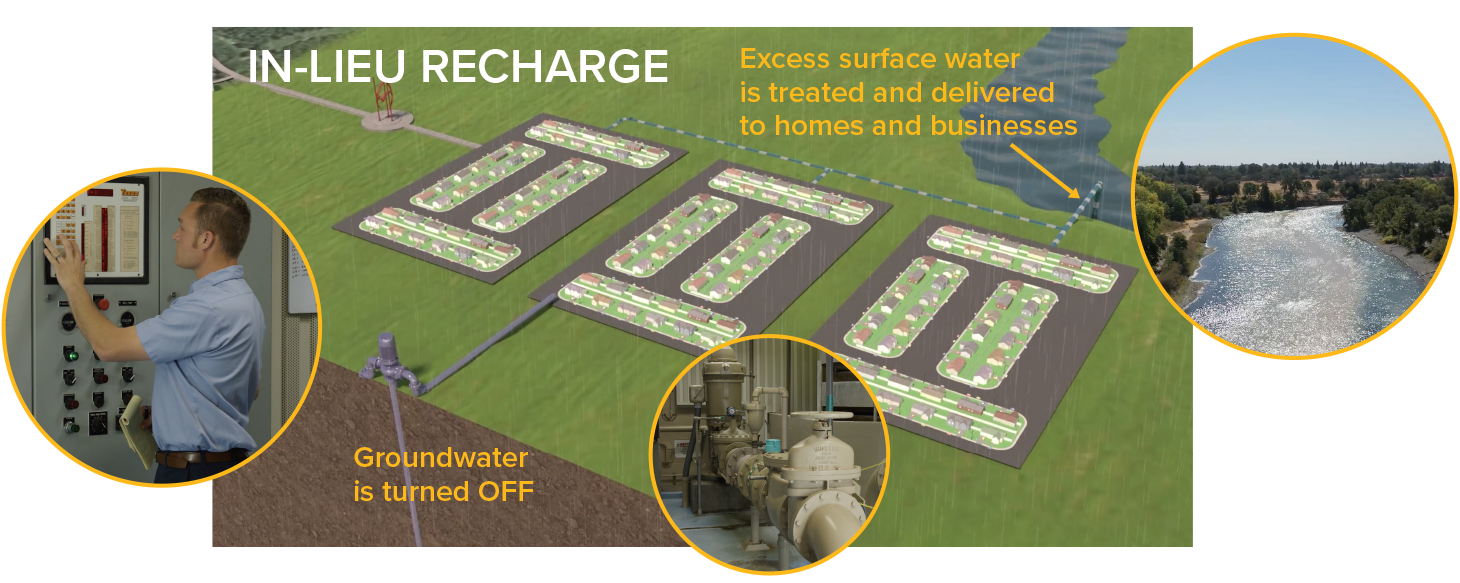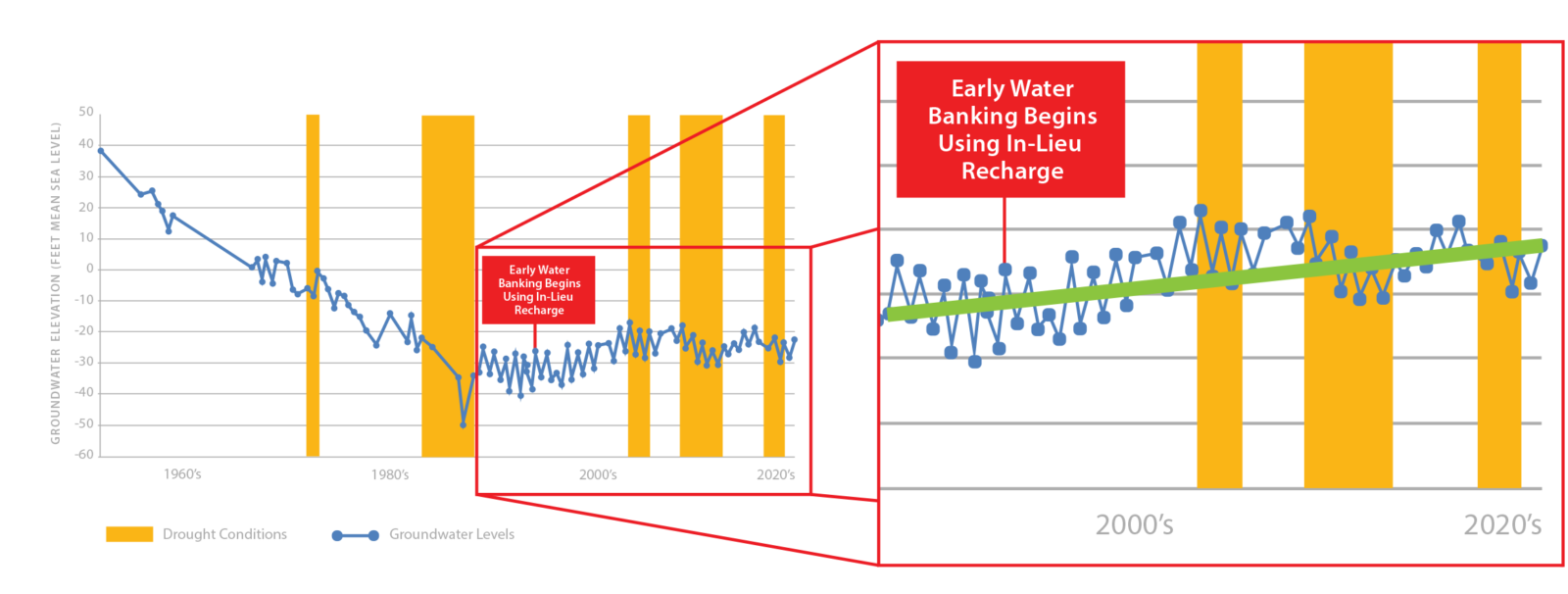UNDERSTANDING
IN-LIEU RECHARGE
In-lieu recharge is a way of managing surface water and groundwater together to restore groundwater levels in our aquifers.
It works by using both natural and managed methods. Water agencies facilitate in-lieu recharge by directing excess surface water from lakes and rivers to customers who typically receive groundwater. This reduces the demand for groundwater, which lets the aquifer recover naturally as water from rain, storms, and rivers seeps into the ground. Every gallon of surface water served to customers in lieu of groundwater results in water saved in the groundwater aquifer. Intentional Process
In-lieu recharge helps us make use of extra river and lake water that otherwise would be lost. It allows groundwater levels to increase naturally in our aquifers and preserves groundwater for future use.
In-lieu recharge uses both managed and natural processes to replenish groundwater. It may seem less obvious than more visible recharge methods like spreading basins or injection wells, but it is not a passive process.
It requires careful planning, coordination, and infrastructure from water agencies. They need to have access to excess surface water, such as from rivers or reservoirs, and deliver it to customers who would otherwise use groundwater. They also need to have wells, pumps, and interconnections to switch between surface water and groundwater sources as needed.

In-lieu recharge is also based on science and data. Water agencies monitor the availability and quality of surface water and groundwater, as well as the geological characteristics of the aquifer. They use this information to optimize the timing and amount of in-lieu recharge, and to adapt to changing conditions.
Recognized in California Law
In-lieu recharge is a well-known and effective way to replenish groundwater in California. It has been used for many years and is supported by water managers, industry experts, state agencies, and academia like the California Department of Water Resources, Public Policy Institute of California (PPIC), and Stanford University.
California law also recognizes in-lieu recharge as a way to sustain groundwater, as defined in Water Code 10721 (m), which defines “In-Lieu” as the use of surface water by persons that could otherwise extract groundwater in order to leave groundwater in the basin. The Sustainable Groundwater Management Act, which requires groundwater agencies to manage in-lieu recharge, also supports this.
Successfully Used in the Sacramento Region and Beyond
In-lieu recharge has been used for decades in the Sacramento region and other parts of California to manage groundwater sustainably.
For example, the Sacramento region faced a groundwater turning point in the 1990s. To restore and maintain groundwater levels, local water providers implemented conjunctive use (water banking on a smaller scale), using in-lieu recharge as the primary method for recharge. Today, the Sacramento region’s groundwater levels are now sustainable.

Local water providers are now enhancing and expanding in-lieu recharge by reoperating existing infrastructure. This is part of the Sacramento Regional Water Bank, a vital, cost-effective, and successful way to cope with climate change impacts on the region’s water supplies.
In-Lieu Recharge Across California
Other areas also use in-lieu recharge for groundwater management.




